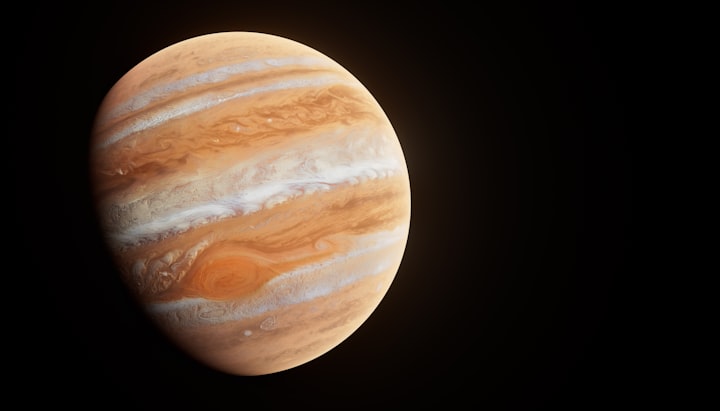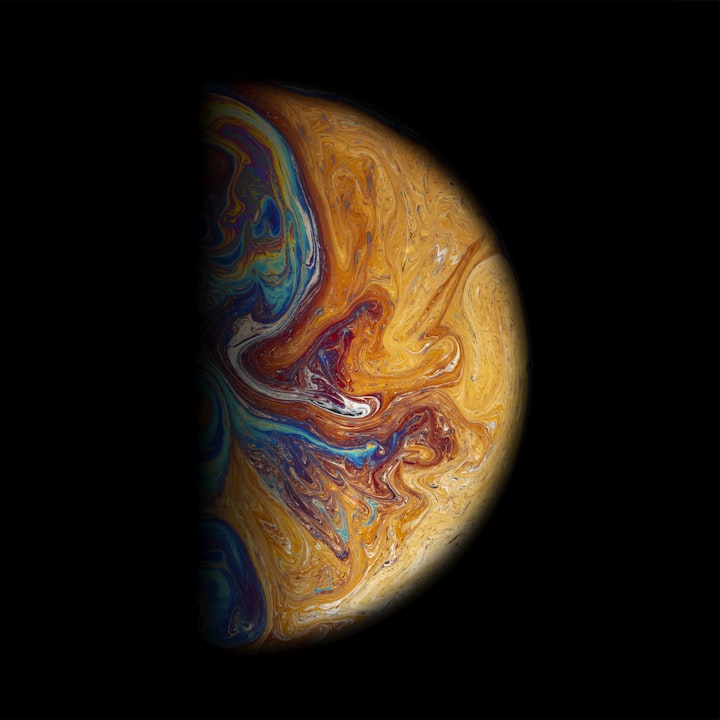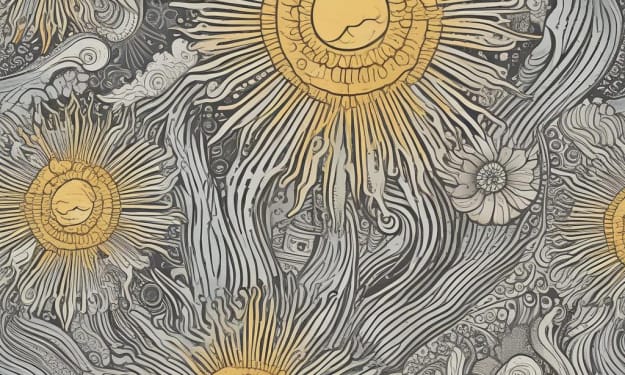
The planets in our solar system come in all sizes, from tiny dwarf planets like Pluto to the massive gas giants like Jupiter and Saturn. But what determines the size of a planet, and why are some planets so much larger than others?
To understand why some planets are so big, we need to look at how planets form. Planets are formed from the gas and dust that surrounds a young star, called a protoplanetary disk. As this material begins to clump together under the force of gravity, it forms larger and larger bodies, eventually creating planets.
The size of a planet depends on several factors, including the amount of material available in the protoplanetary disk, the distance from the star, and the temperature of the disk. The more material available, the larger the planet can grow. However, if the planet is too close to the star, the heat from the star can prevent gas from condensing onto the planet, limiting its growth. Similarly, if the disk is too hot, it can also prevent gas from condensing onto the planet.
The largest planets in our solar system, Jupiter and Saturn, formed in the outer regions of the protoplanetary disk, where there was a lot of material available and the disk was cold enough for gas to condense onto the growing planet. These gas giants are primarily made up of hydrogen and helium, with a small rocky core at their centers.
In contrast, Earth and the other terrestrial planets (Mercury, Venus, and Mars) are much smaller than the gas giants. This is because they formed in the inner regions of the protoplanetary disk, where there was less material available and the disk was too hot for gas to condense onto the growing planets. Instead, these planets are made up of mostly rock and metal.
In addition to the distance from the star and the temperature of the disk, the size of a planet can also be affected by other factors, such as collisions with other planetesimals during its formation, or the presence of large moons that exert gravitational forces on the planet, causing it to bulge and become larger.
Overall, the size of a planet is determined by a complex interplay of factors, including the amount of material available, the distance from the star, and the temperature of the protoplanetary disk. By studying these factors and the properties of different planets in our solar system and beyond, astronomers can gain a better understanding of how planets form and evolve, and the conditions necessary for life to exist on other worlds.
{1} Jupiter :-
Jupiter is the largest planet in the Solar System, with a diameter of about 86,881 miles (139,822 kilometers). It is a gas giant and has no solid surface, only a thick atmosphere that extends thousands of miles down into its interior.
Jupiter's massive size is due to its strong gravitational pull. The planet has a mass of about 1.9 x 10^27 kg, which is more than twice the mass of all the other planets in the Solar System combined. This gravitational pull is also responsible for its many moons, with a total of 79 moons confirmed to date.
Jupiter's composition is mostly made up of hydrogen and helium, similar to the Sun. This has led scientists to believe that Jupiter was originally a failed star, as it has the necessary mass to initiate nuclear fusion and become a star, but not the necessary conditions.
Jupiter also has a distinctive feature in its atmosphere known as the Great Red Spot, which is a giant storm that has been raging for centuries. It is believed to be an anticyclone, or high-pressure system, and is three times larger than the Earth.
{2} Saturn :-
Saturn is the sixth planet from the sun and is the second-largest planet in our solar system, after Jupiter. It is a gas giant planet and is primarily composed of hydrogen and helium. It is famous for its beautiful rings, which are made up of ice particles, rock, and dust.
Saturn has a diameter of about 116,460 kilometers, which is about 9.5 times the size of Earth. It rotates on its axis at a very fast speed, taking just about 10 hours and 33 minutes to complete one rotation. However, its day is still longer than Earth's day, which is 24 hours.
Saturn's atmosphere is also very different from Earth's. It has strong winds that can reach up to 1,800 kilometers per hour, which is about four times faster than the strongest winds on Earth. Saturn also has a very active weather system, with large, swirling storms and hurricanes.
Saturn has many moons, with the current number of confirmed moons being 82. The largest of these moons is called Titan, which is the second-largest moon in our solar system. It is larger than the planet Mercury and has its own atmosphere, which is primarily composed of nitrogen.
One of the most interesting features of Saturn is its rings. These rings are made up of countless small particles that orbit around the planet. The rings are extremely thin, with a thickness of just a few hundred meters. The particles that make up the rings range in size from just a few micrometers to several meters.
Scientists believe that the rings of Saturn were formed when a moon or other object came too close to the planet and was torn apart by the planet's gravity. The resulting debris then formed into the rings that we see today.
{3} Uranus :-
Uranus is the seventh planet from the sun and the third-largest planet in our solar system. It is classified as an ice giant, along with Neptune. Uranus is the first planet to be discovered using a telescope, in 1781, by the British astronomer William Herschel.
Uranus has a diameter of about 50,724 kilometers (31,518 miles) and is four times the size of Earth. It has a mass about 14.5 times that of Earth, making it the lightest of the four gas giants in our solar system. Uranus is also the coldest planet in our solar system, with a minimum temperature of -224 degrees Celsius (-371 degrees Fahrenheit).
Uranus has a unique tilt, with its rotational axis tilted at an angle of 98 degrees relative to its orbit around the sun. This means that Uranus essentially orbits the sun on its side. The cause of this unusual tilt is still a subject of scientific investigation, but it is thought to be the result of a collision with a large object early in Uranus's history.
Uranus has a system of 27 known moons, the largest of which is Miranda. It also has a faint ring system, which was discovered in 1977. Uranus is also notable for its extreme wind speeds, which can reach up to 900 kilometers per hour (560 miles per hour) in its upper atmosphere.
{4} Neptune :-
Neptune is the eighth and farthest known planet from the Sun in the Solar System. It is the fourth-largest planet by diameter and the third largest by mass. Neptune is 17 times the mass of Earth and is slightly more massive than its near-twin Uranus, which is 15 times the mass of Earth.
Neptune is known for its deep blue color, which is caused by the absorption of red light by methane in its atmosphere. It has the strongest winds in the Solar System, with speeds of up to 2,100 kilometers per hour (1,300 miles per hour) and is named after the Roman god of the sea.
Neptune has 14 known moons, the largest of which is Triton. Triton is unusual in that it is the only large moon in the Solar System that has a retrograde orbit, meaning it orbits in the opposite direction to its planet's rotation. This suggests that Triton was not formed in orbit around Neptune, but was instead captured by the planet's gravity.
Neptune also has a faint and incomplete ring system, consisting of several narrow rings and some clumps of material, which are believed to be the remains of moons that were destroyed by impacts.
The study of Neptune is important for understanding the outer Solar System and the processes that shaped it. The Voyager 2 spacecraft is the only spacecraft to have visited Neptune, in 1989, and provided detailed information about the planet and its moons.





Comments
There are no comments for this story
Be the first to respond and start the conversation.